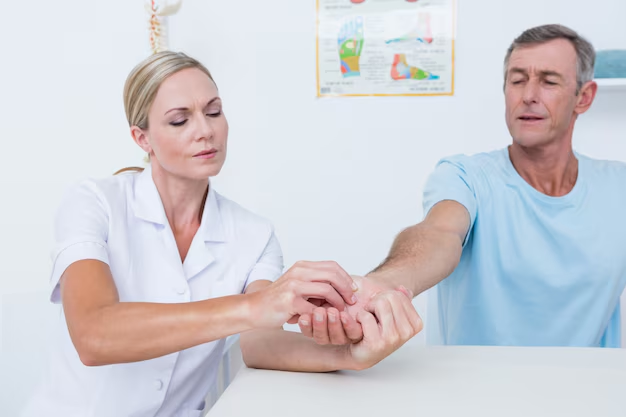Recognizing the Signs: Could You Have Arthritis?
Every morning, as you stretch out your limbs, that familiar stiffness creeps in. It's as if your knees have suddenly aged a few decades overnight, or perhaps your fingers are playing a cruel game of resistance. If this sounds a bit too familiar, you might be asking yourself, “Do I have arthritis?” Not to worry, you're not alone. Millions around the globe wake up with these very thoughts, questioning the possibility of arthritis. This article will explore what arthritis is, how it presents itself, and what steps you can take to better understand your condition.
Understanding Arthritis
Arthritis is essentially a catch-all term for conditions that affect the joints. There are more than 100 types of arthritis, with osteoarthritis and rheumatoid arthritis being the most common. While arthritis cannot always be pinpointed to a single cause, genetics, lifestyle, age, and injuries are prominent contributors.
Types of Arthritis
Osteoarthritis (OA): Known as the "wear and tear" arthritis, it usually affects older adults due to natural degeneration of cartilage in the joints.
Rheumatoid Arthritis (RA): An autoimmune disorder where the immune system mistakenly attacks the lining of the joints, leading to inflammation.
Psoriatic Arthritis: Often occurs in people with psoriasis and involves both skin and joint inflammation.
Gout: Caused by the accumulation of urate crystals, leading to sudden, severe attacks of pain, redness, and tenderness.
Ankylosing Spondylitis: More common in young adults, it mainly affects the spine, causing ongoing inflammation.
Symptoms to Look Out For
Recognizing arthritis early can be incredibly beneficial. While symptoms can vary depending on the type of arthritis, there are common indicators to be aware of:
Physical Symptoms
- Joint Pain: Persistent aching or stiffness around one or more joints.
- Swelling: Noticeable swelling in one or more joints.
- Reduced Range of Motion: Difficulty moving joints or engaging in routine activities.
- Redness or Warmth: Visible redness or warmth in a joint area.
Non-Physical Symptoms
- Fatigue: Feeling unusually tired could be a sign of RA or other types of inflammatory arthritis.
- Fever: Mild fever accompanying joint symptoms could indicate an autoimmune type such as RA.
Diagnosing Arthritis
Thinking you might have arthritis is the first step towards understanding your condition. Confirming it, however, involves more precise methods.
Consultation
Seeing a healthcare professional is paramount. They will likely start with:
- Medical History: Discussing past medical history, family history of arthritis, and the nature of symptoms.
Tests
Several tests help in diagnosing arthritis:
Blood Tests: To check for markers of inflammation or autoimmune antibodies, especially relevant for RA.
Imaging Tests: X-rays, CT scans, and MRIs can visualize the extent of joint damage or inflammation.
Joint Fluid Analysis: A sample from the affected joint can help identify the type of arthritis.
Lifestyle and Management
If you're confirmed to have arthritis, managing it becomes a lifelong journey. There are various lifestyle adjustments and interventions you might consider.
Lifestyle Changes
Exercise Regularly: Low-impact activities like swimming and cycling can improve mobility without stressing the joints.
Healthy Weight: Maintaining a healthy weight reduces stress on weight-bearing joints, particularly in OA.
Balanced Diet: A diet rich in omega-3s, antioxidants, and anti-inflammatory foods (like fruits, veggies, and fish) can be beneficial.
Pain Management Techniques
Heat and Cold Therapy: Applying warmth can ease stiffness, while cold compresses can lessen swelling.
Physical Therapy: Tailored exercises can improve strength and flexibility in affected joints.
Mind-Body Techniques: Practices like yoga, Tai Chi, and meditation offer holistic benefits by reducing pain perception and stress.
Dispelling Common Myths
There are plenty of misconceptions when it comes to arthritis. Here are a few demystified:
Arthritis is for the elderly: While more common in older individuals, arthritis can affect people of all ages, including children (juvenile arthritis).
Exercise worsens arthritis: In reality, appropriate exercise strengthens muscles around the joints, enhancing support and reducing pain.
It's just minor aches and pains: Arthritis is a significant medical condition that can affect quality of life and requires proper management.
Possible Next Steps
If you suspect arthritis might be affecting you, here's a roadmap of next steps:
- Monitor Symptoms: Keep a detailed log of symptoms, noting any changes or patterns.
- Seek Professional Guidance: Consult a healthcare provider to get a proper assessment.
- Educate Yourself: Understand more about your specific type of arthritis to make informed decisions.
- Join Support Groups: Engaging with others in similar situations can provide both comfort and practical advice.
Key Takeaways
- Arthritis involves several types, most commonly osteoarthritis and rheumatoid arthritis.
- Symptoms can include joint pain, swelling, and fatigue.
- Proper diagnosis is essential, often involving blood tests and imaging.
- Lifestyle changes, such as exercise and diet alterations, are crucial for management.
- Misconceptions about arthritis can hinder effective treatment and need addressing.
Practical Tips for Living with Arthritis
- Stay Physically Active: Even light stretching daily makes a difference. 🤸♀️
- Maintain a Support System: Emotional well-being is as crucial as physical care. ❤️
- Focus on Nutrition: A balanced diet reduces inflammation and supports joint health. 🥗
- Use Assistive Devices: Gadgets like canes or jar openers can ease daily activities. 🦯
- Stay Informed: Knowledge is empowering. Visit reliable sources to stay updated. 📚
Living with arthritis doesn’t have to be an exercise in limitation. By understanding the condition and noting the signs early, you can lead a fulfilling, active life. Always remember, while arthritis is a part of your life, it doesn't have to define it.

Related Articles
- Are Bananas Bad For Arthritis
- Are Tomatoes Bad For Arthritis
- Can An Inflamed Nerve Cause Arthritis
- Can Arthritis Be Cured
- Can Arthritis Be Reversed
- Can Arthritis Become Septic After Infection From Injection
- Can Arthritis Cause Numbness
- Can Arthritis Cause Swelling
- Can Cracking Knuckles Cause Arthritis
- Can Cracking Your Knuckles Cause Arthritis